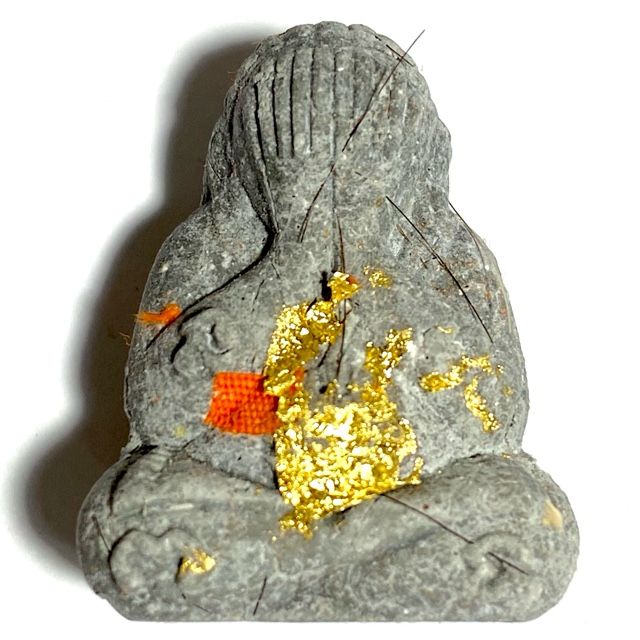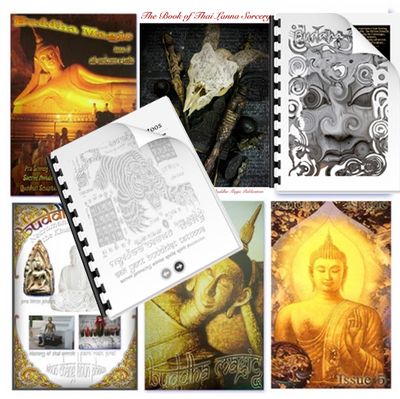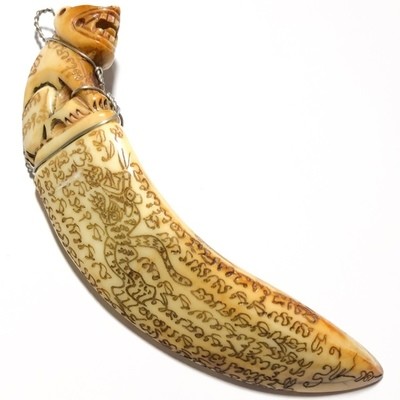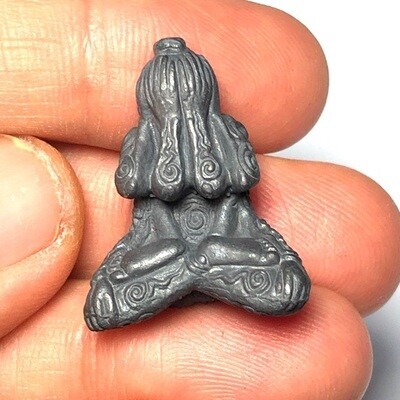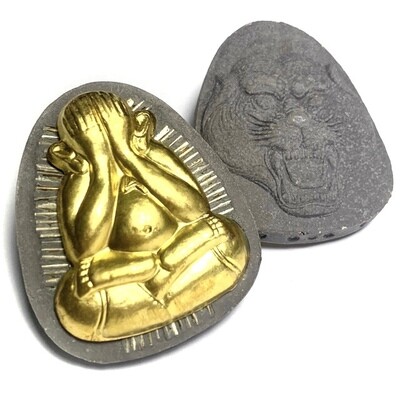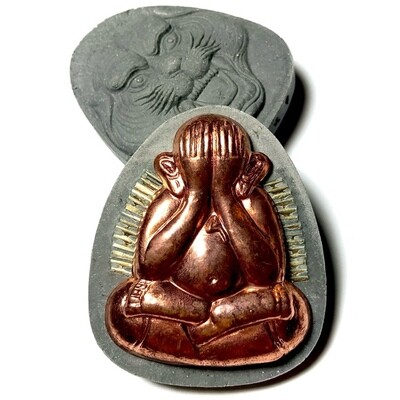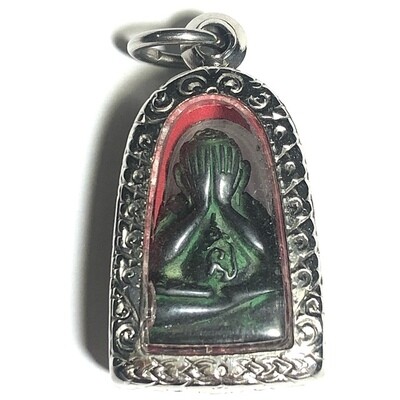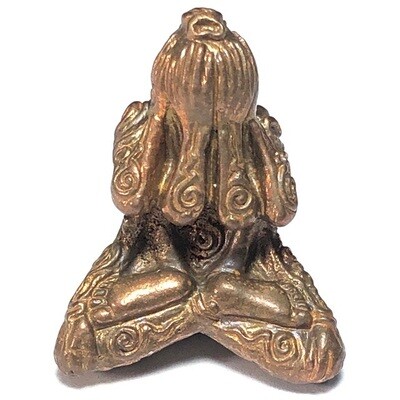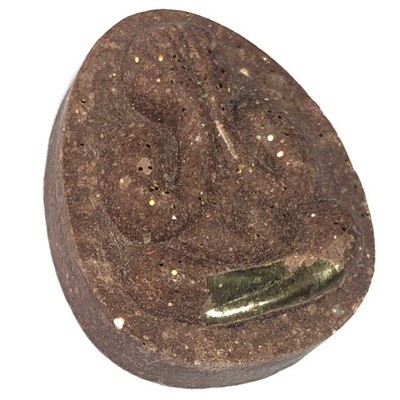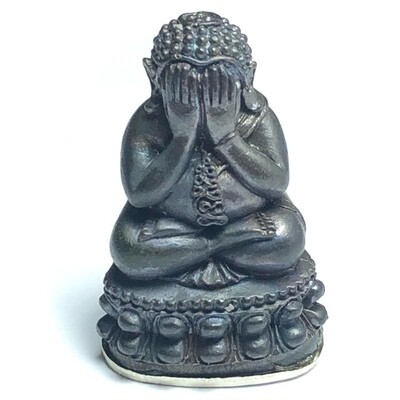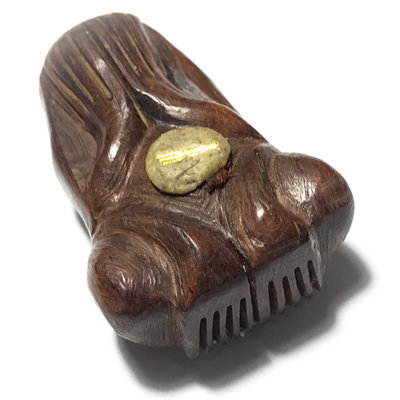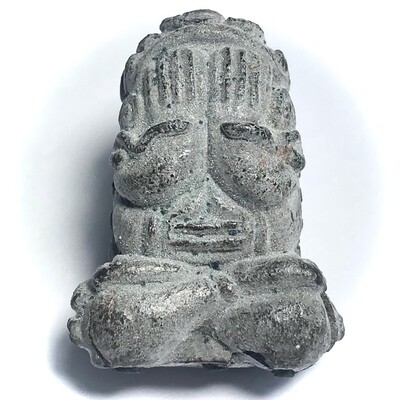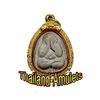

Thailand Amulets
Thai Buddhist and Magical amulets for Wealth, Health, Love and Happiness.
Vast Selection of Amulets
We have a vast selection of over 4000 different kinds of Sacred Amulets and Bucha Items, including Buddha Image, Loi Ongk statuettes, Buddhist Monk Coin Amulets, Takrut Charms, Nam Man Prai Oils, Mai Kroo Wands, Mitmor Ritual Knife, Lek Lai Kaya Siddhi Elemental Substance, Kumarn Tong, Gambling Amulets, Mae Nang Prai, Muan Sarn Sacred Powder Amulets, Palad Khik, Animist Charms, Necromantic Amulets, Buddhist, Animist, Brahman and Necromantic Amulets.
Pra Pid Ta Luean Yos 100 Pi Ongk Kroo Nuea Pong Bailan Gesa Hairs Jivara Robe Gold Leaf 1 Solid Gold Takrut LP Pat Wat Huay Duan Only 259 Made
Pra Pid Ta Luean Yos Raised Royal Status 'Roi Pi' 100 Years Edition amulet from the Great Luang Por Pat of Wat Huay Duan in Nakorn Sawan, celebrating the 100th Anniversary. These amulets were made in small numbers, but in a vast array of different sacred powders, with various sacred muan sarn embedded, such as Gold and Silver Coated, Gesa Hairs of LP Pat, Sinjana Cords, Baengk Ngern banknote shreds, Jivara Monk's Robe of Luang Por Pat, Ploi Sek Enchanted Gemstone Fragments, Pong Tabai filings from Buddha Statues, Paeng Sek Blessed Talc Paste, as well as a host of different admixtures of Sacred Herbal Muan Sarn Powders. Some special Metallic Versions were also released, in small numbered limited Gammagarn editions.
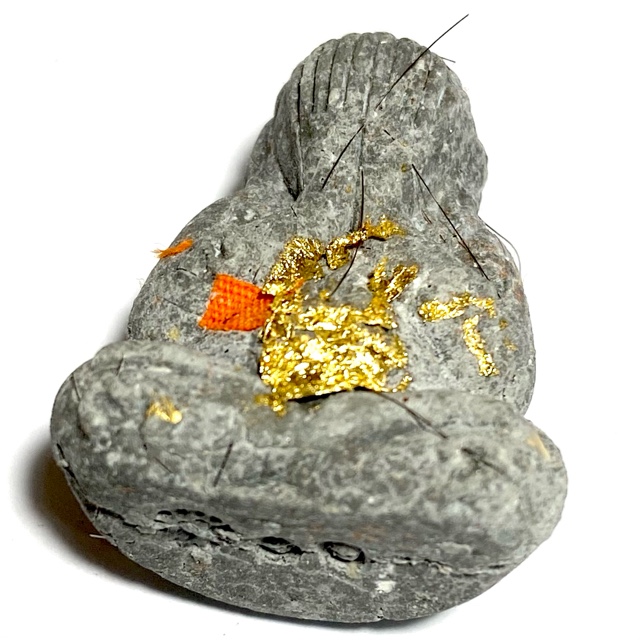
This particular exhibit is in Nuea Pong Bailan Sacred Grimoire Parchment Soot, Kakyayaks Sacred Marsh Peat, Gesa Hair strands, and Jivara Robe shreds of LP Pat. with Gold Leaf, and 1 Solid Gold Takrut spell inserted into rear face. This version is an Ongk Kroo Version, and was only made in a limited number of 259 amulets.
Luang Por Pat gained great national reverence as an aged Centenarian Monk, and direct apprentice of the Great Luang Por Derm of Wat Nong Po (Nakorn Sawan). His long trajectory has produced a large number of famously successful editions of amulets, which are highly treasured by devotees, who know they are revering an aged monk of the last few living masters of the second world war and Indo-China wartime era, when Siam was at its most famous for the number of powerful magic monks, and their immensely effective and real magical powers.
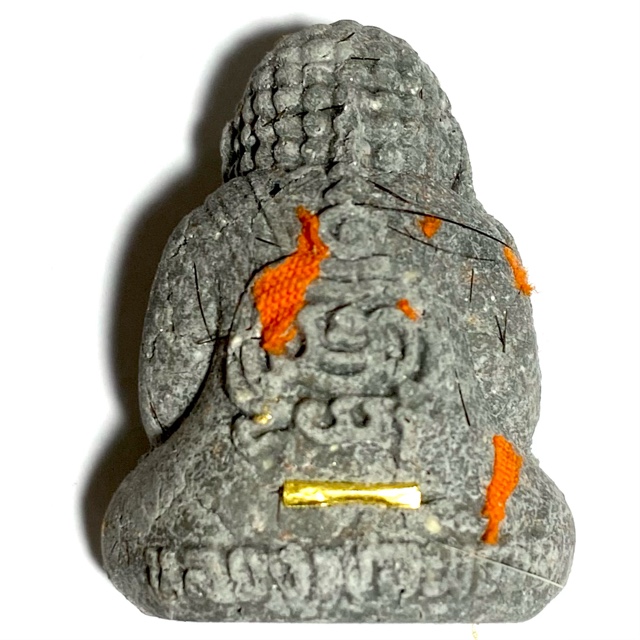
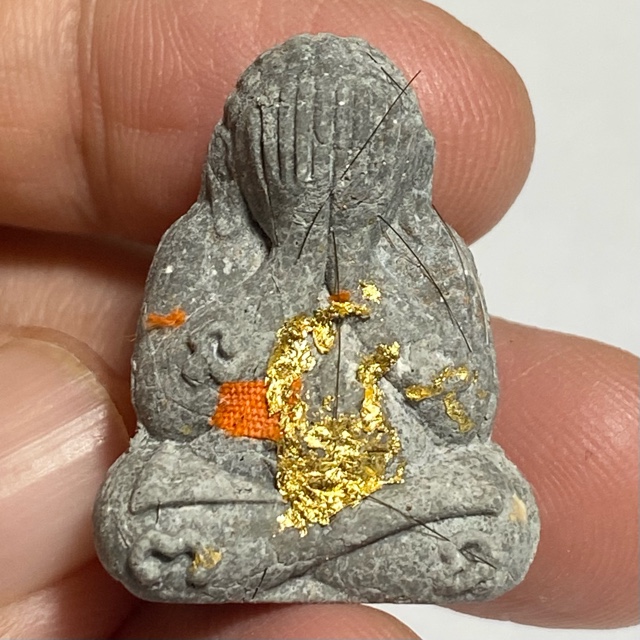
Kata Bucha Luang Por Pat
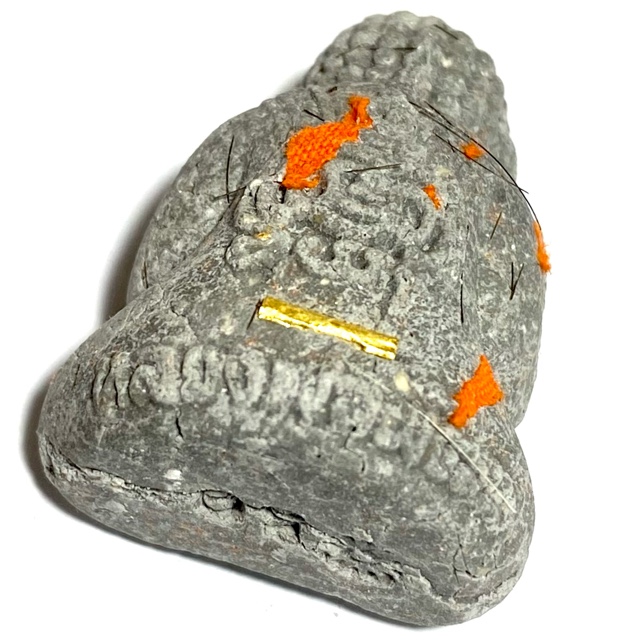
The Kata for Pra Pid Ta are varied, both short and long. One of the best known ones is the Kata Pra Jao Ha Praongk (five Dhyani Buddhas) as well as the fivefold encoding of Namoputtaya of Na Metta
“Na Metta Mo Karunaa Put Pranee Taa Yin Dee Ya En Doo – Krai hen hnaa Goo Rak Goo Khad Goo Mi-Dai”
The above Kata is Maha Saneh Choke Laap – luck and fortune, and charming power.
Pra Pid Ta is also known as Pra Pakawambadee
Kata Pra Kawambadee (This kata is for increasing ones wealth and belongings and good fortune);
Namo Puttassa Kawambadtissa Namo Tammassa Kawambadtissa Namo Sangkassa Kawambadtissa Sukha Sukha Warang Na Mo Puttaaya Ma A U Tugkhang Anijjang Anatta Jewa
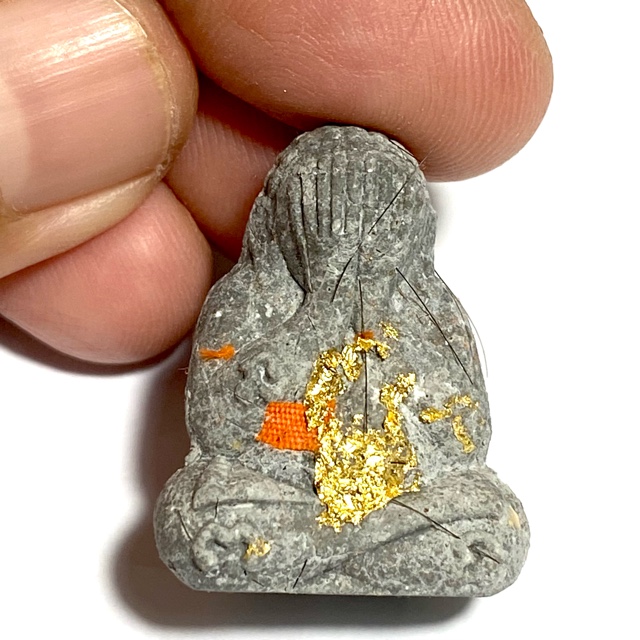
Another Kata you can use for Pra Pid Ta is;
Na Erd Ad Bad Mit Na Bid Jit Bad Satroo Na Ning Yoo New Mew Pew Tew Mo Erd Ad Bad Mit Mo Bid Jit Bad Satroo Mo Ning Yoo New Mew Pew Tew Put Erd Ad Bad Mit Put Bid Jit Bad Satroo Put Ning Yoo New Mew Pew Tew Taa Erd Ad Bad Mit Taa Bid Jit Bad Satroo Taa Ning Yoo New Mew Pew Tew Ya Erd Ad Bad Mit Ya Bid Jit Bad Satroo Ya Ning Yoo New Mew Pew Tew Na Ma Pa Ta Na – Mo Put Taa Ya – Ja Pa Ga Sa – Na Ma A U U A Ma I-Swaasu Suswaa-I
You can change the words “bid jit” for “bid bpaag” – bid jit means to close the mind of (the enemy) used for stopping them from harming you – bid bpaag means to close the mouth – used in for example, a court case where the enemy is bearing witness against you or speaking against you) – You can change the words “bad satroo” (meaning “swipe the enemy down”, to “haam satroo” (meaning “forbid the enemy”) depending on your needs.
One can also use the Kata Pra Sangkajjai for Pra Pid Ta, for indeed, Pra Sangkajjai performed the Nirodha Meditation to become an Arahant and douse out the causes of suffering ('Nirodha' or, the meditative state of blocking out the exterior world and desires, extinguishing suffering, is the meaning of the Buddha with hands over eyes/orifices)
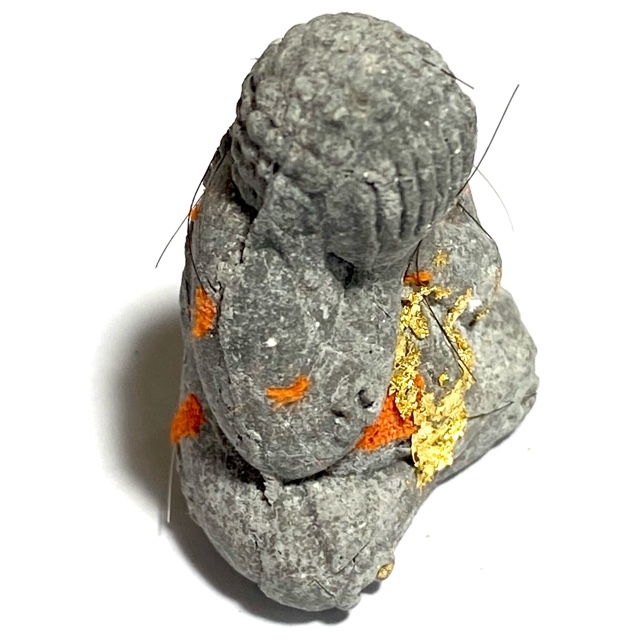
Origins of the Pra Pid Ta Famous Amulet
Pra Pid Ta amulets, as well as Pra Pid Ta in form of Pha Yant, and Bucha statues, have been produced as objects of reverence and protection since very ancient times in Thailand. The artisans of that time created various styles and interpretations using the various periodic influences of Buddhist art and sculpture available at the time. Varios Deity forms were used to make the Pid ta posture (‘Pid Ta’ means ‘covering the eyes’) – various Buddhas or Bodhisattvas or Deities are fashioned into the posture of Pra Pid ta, or Pid Tawarn (meaning ‘closing the orifices). Pid Tawarn can close 7, or 9 orifices (seven being called ‘Pra Pid Sadtatawarn’ and nine being called ‘Pra Pid Navatawarn’).
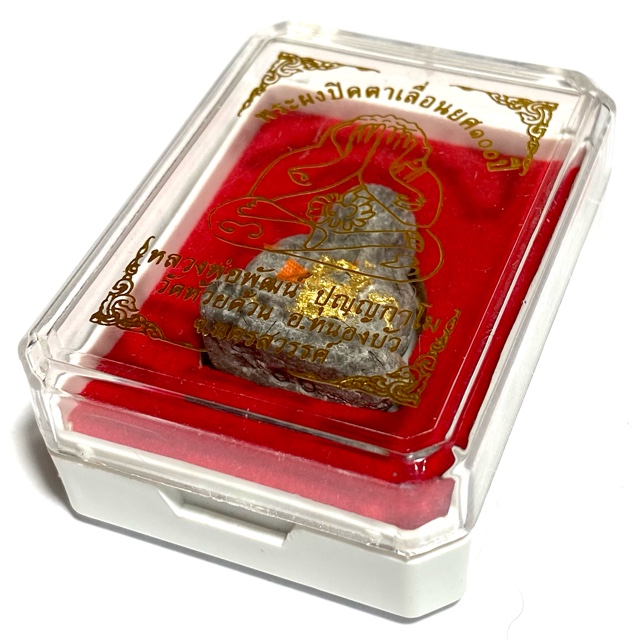
The Pra Pid Ta is considered to be an amulet with ‘Maha Ud’ and ‘Kong Grapan’ power (invincibility and gunstopping power), but is also made as a wealth bringer, in which case, the amulet will be called ‘Pra Pid ta Maha Lap’. In order to inflect a greater resonance for wealth attraction and auspicious blessings, in addition to the Maha Ud and Kong Grapan magic, ancient artisans sometimes would use the image of the Sangkajjaiyana Buddha of riches and happiness, and carve it in the Pid Ta posture.
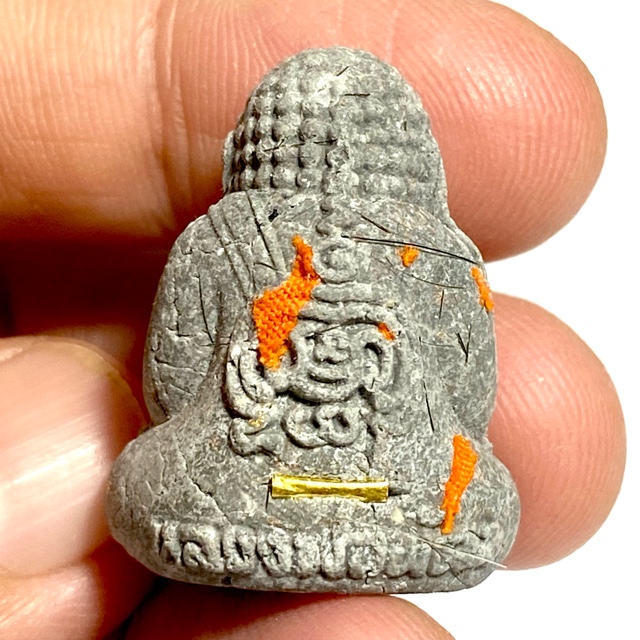
The Pra Pid Ta amulet is one of the most popular of Thai amulets, and has been made by so very many temples and masters from all Provinces, that it is now classed as an important member of the Benjapakee family of classic top five types of Thai amulets. This is of course different from the classic Benjapakee known worldwide entailing the five most popular amulet types of the five regions of Thailand. Apart from the National Benjapakee of Pra Somdej, Pong Supan, Nang Paya, Sum Gor, and Pra Rod, each amulet type (such as Pra Pid Ta), has its own set of 'Top 5' Benjapakee amulets.
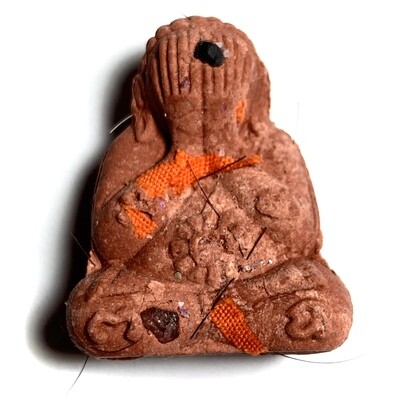
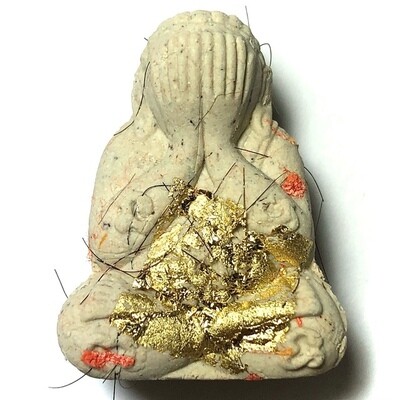
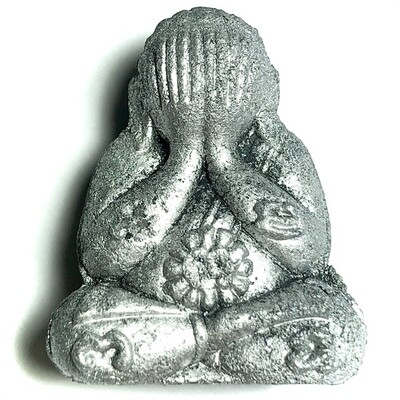
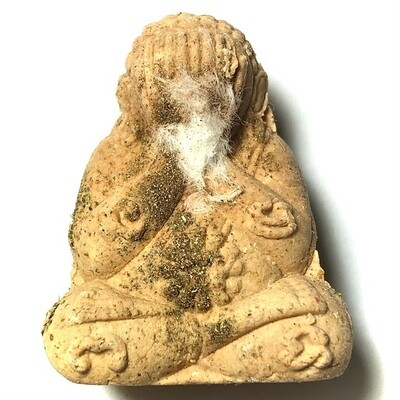
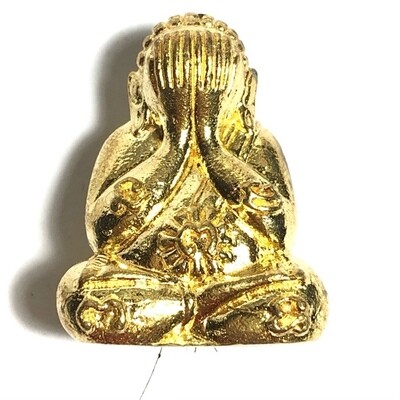
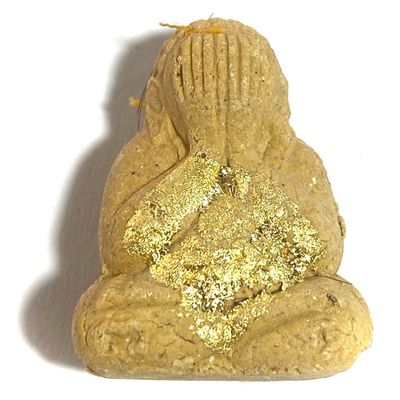
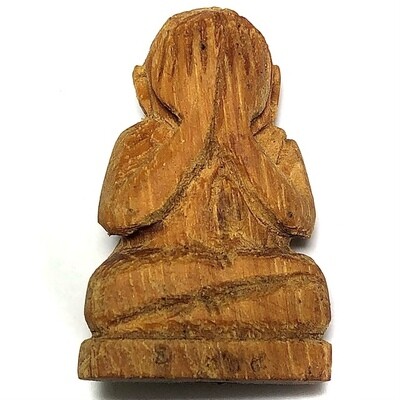
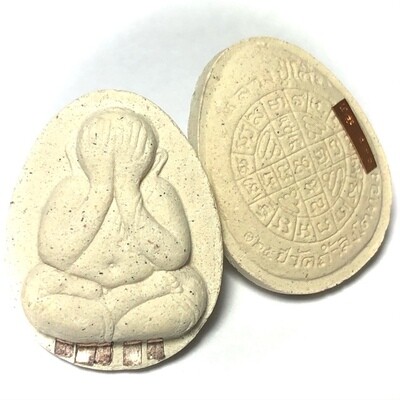
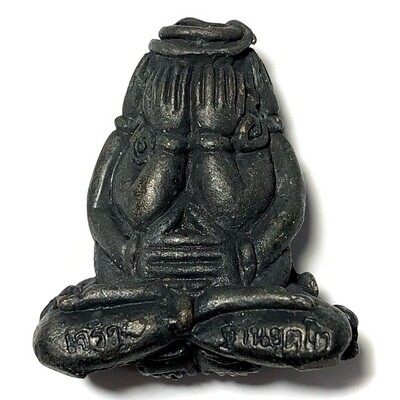
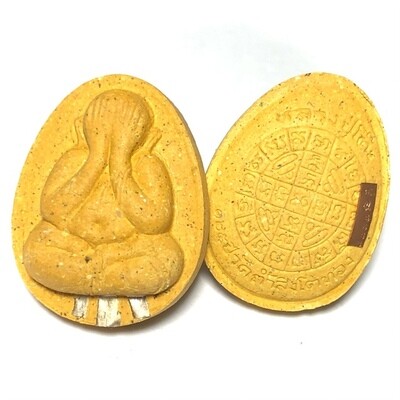
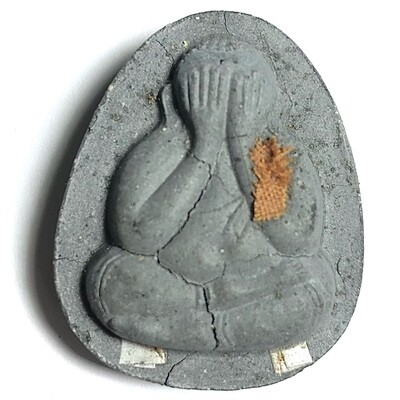
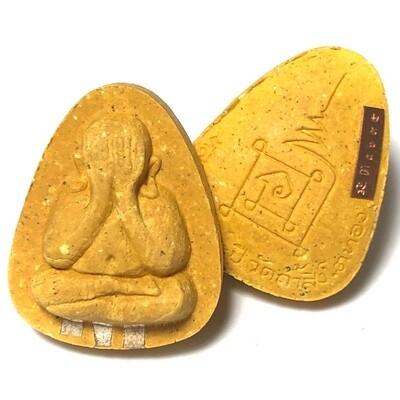
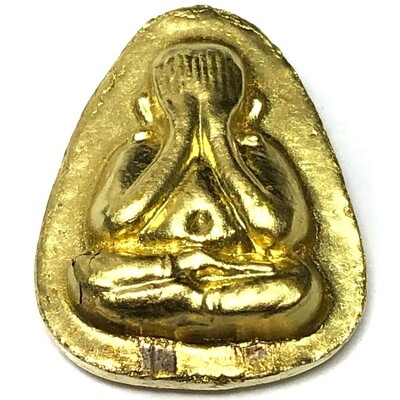
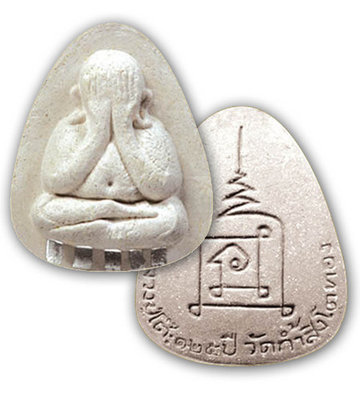
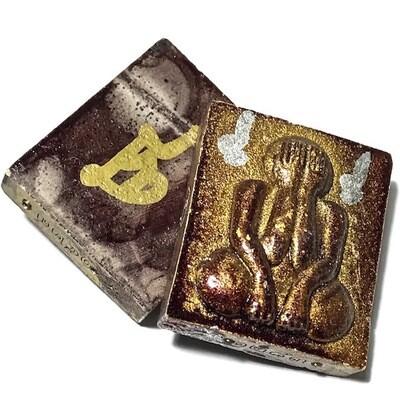

Contact Us
Follow Us on Youtube
About Us
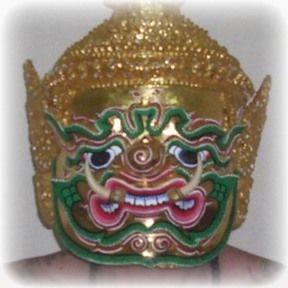
Ajarn Spencer
Proprietor
Thailand Amulets is owned and Administrated by Thai Occult and Amulet expert, Ajarn Spencer Littlewood who guarantees only authentic blessed amulets, and a free gift with every order, as well as his safe delivery or money back guarantee. https://facebook.com/ajarnspencer
